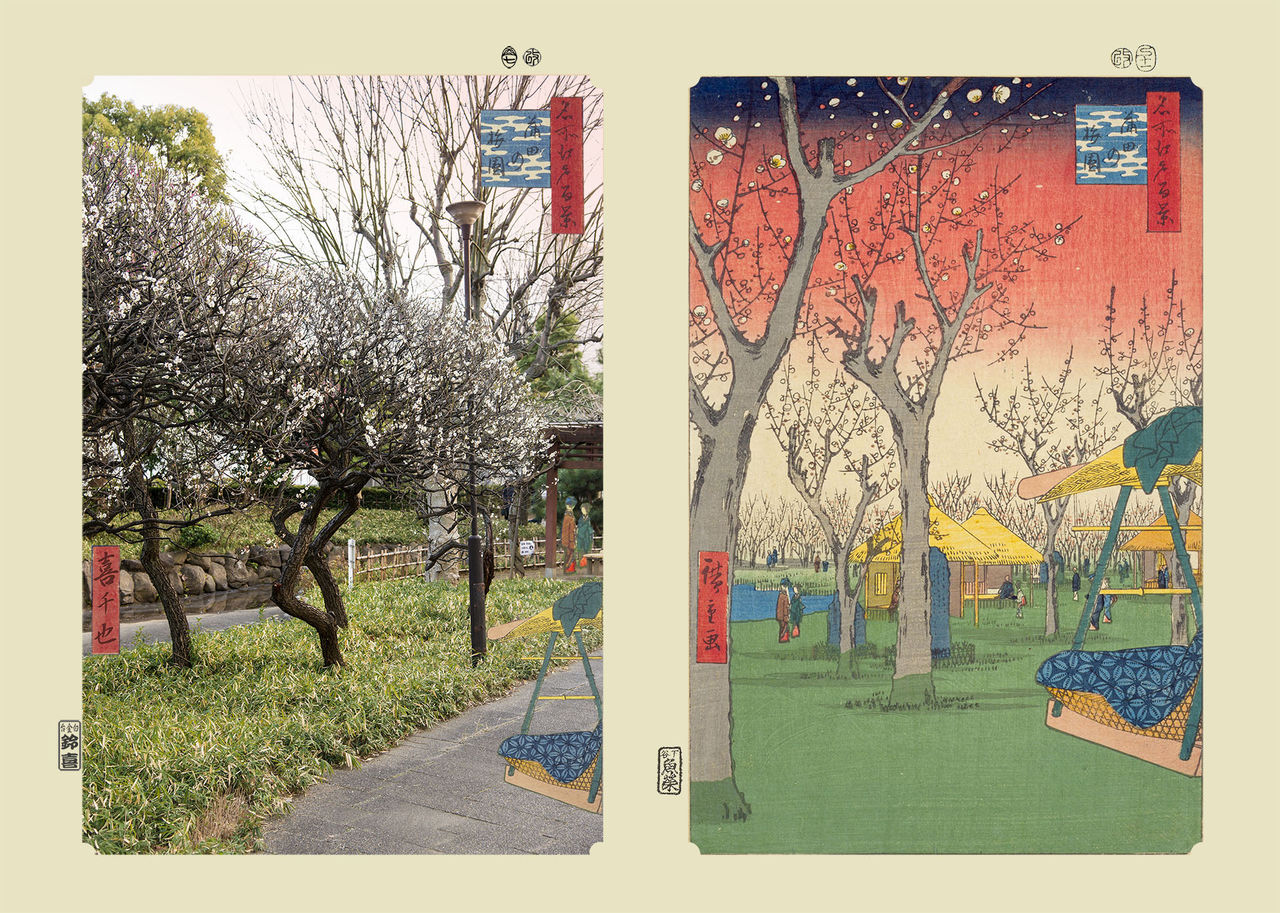
Plum Trees Past and Present: “Plum Garden at Kamata”
Guideto Japan
- English
- 日本語
- 简体字
- 繁體字
- Français
- Español
- العربية
- Русский
One Hundred Famous Views of Edo by Kichiya, the Ukiyo Photographer: Today’s Tokyo Through Hiroshige’s Eyes
Meisho Edo hyakkei, known in the West as One Hundred Famous Views of Edo, was one of ukiyo-e artist Utagawa Hiroshige’s most celebrated works, influencing even Western artists like Van Gogh and Monet. Drawn in Hiroshige’s final years and published from 1856 to 1861, the series depicted the sights of Edo (as Tokyo was then known) through the changing seasons. Audiences around the world admired Hiroshige’s inventive use of bold compositions, bird’s-eye-view perspectives, and vivid colors. A century and a half later, “ukiyo photographer” Kichiya has set himself the task of recreating each of these views with a photograph taken in the same place, at the same time of year, from the same angle. Join us in this new series at Nippon.com on a tour of these “famous views” in Edo and modern-day Tokyo, guided by Kichiya’s artistry and his knowledge of old maps and life in Edo.
A Garden Fit for an Emperor
Seiseki Kamata Umeyashiki Park is in the Kamata district of Ōta, Tokyo, not far from Umeyashiki Station on the Keikyū Line. Tradition holds that local merchant Yamamoto Kyūzaburō, a hawker of patent medicine for travelers, founded the garden during the Bunsei era (1818–31) when he planted plum trees around a teahouse he built alongside his store.
The lively scene depicted by Hiroshige suggests that Yamamoto’s trees attracted quite a crowd when in bloom. Stone monuments bearing poetic inscriptions selected by the haiku-loving Yamamoto as well as milestones are seen scattered among the blossoming plums. Many of these markers still stand today. Emperor Meiji visited the park about 10 years after Hiroshige produced the wood-block print and found it so much to his liking that he returned many times thereafter. In honor of this imperial patronage, the term seiseki (literally “sacred place”) was added to the park’s name.
I snapped this photograph on a February evening just as the sky above the blossoming plum trees began to redden. Although developments like the expansion of National Route 15 have made the park smaller than in Hiroshige’s day, the pond, stone monuments, and wisteria arbor above the benches all evoke the atmosphere of the original print.
About the Location
In the late Edo period, Kamata’s Umeyashiki plum garden was considered alongside the famous plum orchard of Kameido as one of the finest plum blossom viewing spots in the city. Today, part of it still survives as Seiseki Kamata Umeyashiki Park. The property originally belonged to the Yamamoto Kyūzaburō, a merchant who sold a patent medicine known as wachūsan—said to be effective against food poisoning, heatstroke, and other ailments—to travelers passing by on the nearby Tōkaidō highway. Local vendors of the remedy, of which there were several, each maintained their own teahouse to help lure customers. Yamamoto’s teahouse, built of the finest plum wood, is said to have been particularly popular.
Location 3-25 Kamata, Ōta, Tokyo
Access 5 minutes’ walk from Umeyashiki Station, or 7 minutes’ walk from Keikyū Kamata Station on the Keikyū Main Line
tourism Tokyo ukiyo-e One Hundred Famous Views of Edo by Kichiya Ōta-ku Kantō
